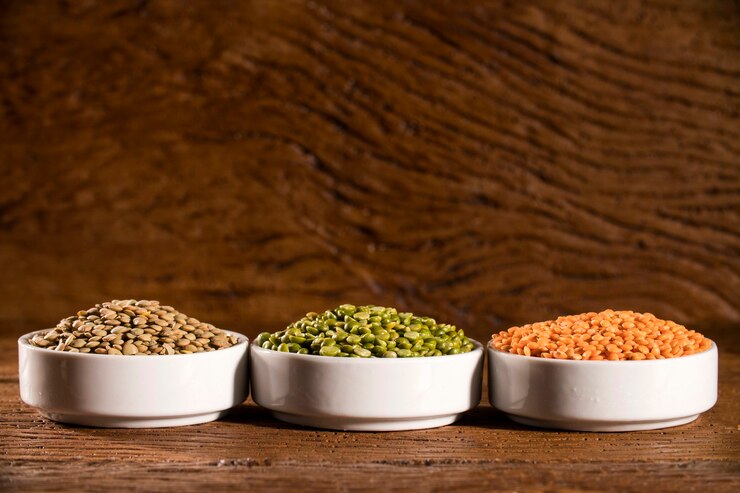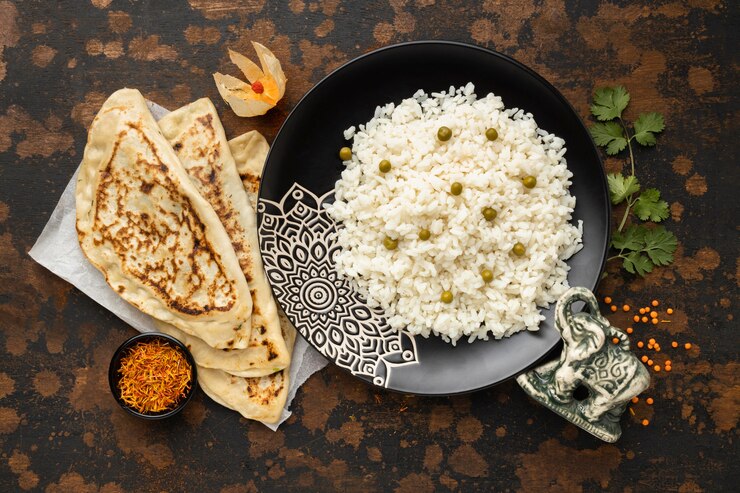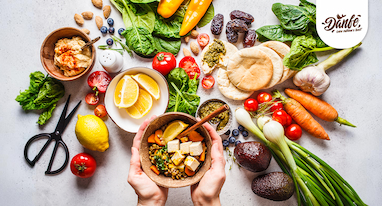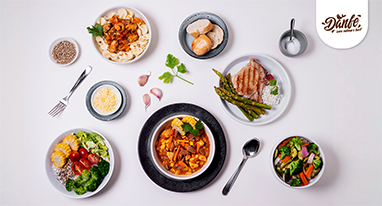Indian Cooking Secrets for Traditional Everyday Daily Meals
BY DANFE |

Cooking Indian meals at home might seem difficult because of its many spices and ingredients you might not know. But with some helpful tips, you can turn your kitchen into a place where you make tasty, aromatic traditional Indian food easily and have fun doing it.
The Foundation: Garlic, Onions, Ginger, and Chilies

In Indian cooking, garlic, onions, and ginger are essential for flavor in many dishes. To make them easier to use, you can make the paste in batches and freeze them in small portions. Here’s how to do it:
1. Garlic and Ginger Paste: You can use a food processor or grate garlic and ginger separately. Divide them into small portions, flatten them for easy storage in bags, and then freeze. This way, you’ll always have these key flavors on hand whenever you need them.
2. Chilies: Whether you like your dishes mild or spicy, chilies are crucial in Indian meals. After removing their stems, wash them, dry them completely, and store them in a container in the fridge. This easy method can keep them fresh for weeks.
Adding Freshness with Tomatoes and Coriander

Fresh tomatoes are commonly simmered to create flavorful bases for curries. Another option is using tomato paste, which is strained tomatoes ready to enhance your dishes quickly. When it comes to preserving coriander (cilantro), here are some Indian cooking secrets:
1. Preparing Coriander: Wash the coriander thoroughly and dry it completely, using a salad spinner and a tea towel. Chop both leaves and stems.
2. Freezing Coriander: Place the chopped coriander in a freezer-safe bag or container. When needed, simply grab a handful and add it directly to your cooking from frozen.
Building the Blocks of Flavor with Spices

While the many spices used in traditional Indian food might feel overwhelming, beginning with essential spices sets a strong foundation for your culinary journey:
1. Essential Spices: Begin with cumin seeds for nuttiness, Danfe turmeric for earthy color, chili powder for heat, Danfe coriander seeds for citrus notes, garam masala for warmth, asafoetida for onion/garlic flavor, and salt for enhancing flavors.
2. Buying and Storing Spices: Purchase spices in small quantities to maintain freshness, as they can lose potency after about six months. To keep spices fresh, store them in a cool, dark place away from heat and sunlight. Light and heat can make spices lose flavor and color. Use airtight containers to protect spices from air and moisture.
Lentils and Beans: Versatile and Nutritious

Lentils and beans are important in Indian meals. They provide protein, fiber, and rich flavors. Here are some essential varieties to keep in your Kitchen:
1. Danfe Masoor Lentils: Also known as red lentils, these cook quickly and have a mild, earthy flavor ideal for dals and soups.
2. Moong Lentils: Danfe Green moong lentils are high in protein, while Danfe yellow moong lentils are sweet and versatile for dals and fritters.
3. Chana Lentils and Danfe Kabuli Chickpeas: Channa lentils add a nutty flavor and heartiness to curries, while kabuli chickpeas are creamy and well-loved in dishes like Channa Masala.
Rice, Bread, and Flour

Rice and various breads complement Indian meals perfectly. Keep these staples on hand for versatile meal options:
1. Basmati Rice: White and brown varieties offer flexibility depending on your dish and cooking time preferences.
2. Danfe Atta Flour: Atta flour is essential for making chapatis, parathas, and puris, providing a smooth, pliable dough. Gram flour, made from ground chickpeas, is gluten-free and serves as a thickening agent for savory dishes.
Equipment: Tools of the Trade

Investing in the right equipment can streamline your cooking process and enhance the authenticity of your dishes:
1. Pressure Cooker: A must-have in Indian kitchens, great for cooking lentils, making rice dishes, and softening meats quickly.
2. Food Processor and Micro Grater: Perfect for finely chopping ingredients and making smooth ginger and garlic pastes, saving you time and effort in the kitchen.
3. Tava Pan and Rolling Pin: Essential for making chapatis and parathas, the tava gives a flat cooking surface, while the rolling pin ensures even thickness.
4. Heavy-Base Pan with Lid: Essential for caramelizing onions and slow-cooking curries, ensuring even heat distribution and enhancing flavor development.
5. Spice/Coffee Grinder: Enhances flavor by grinding spices fresh, providing superior taste and aroma compared to pre-ground powders.
Learning Indian cooking isn’t just about recipes. It’s about using techniques and tools that make cooking easier while keeping the authentic flavors intact. With these basic tips and a love for cooking, you can make traditional Indian dishes that taste great and bring the warmth of Indian kitchens to your table.
Indian cooking is about enjoying the process and creating meals that satisfy both body and soul. Happy cooking!
Frequently Asked Questions (FAQs)
Q1 Why are garlic, onions, ginger, and chilies so important in Indian cooking?
Garlic, onions, ginger, and chilies form the flavor base of many Indian dishes, providing depth and aroma. They can be prepared in advance by making pastes and freezing them for convenience.
Q2. How can I keep chilies fresh for longer periods?
After removing stems, wash chilies thoroughly, dry them completely, and store them in a container in the fridge. This simple method helps maintain their freshness for weeks.
Q3. How should I store spices to maintain their freshness?
Purchase spices in small quantities and store them in a cool, dark place away from heat and sunlight. Use airtight containers to protect spices from air and moisture, which can degrade their flavor and potency.
Q4. What are some tips for adjusting the spiciness level of Indian dishes to suit different preferences?
Control the heat by adjusting the amount and type of chilies used, or by adding yogurt or coconut milk to mellow out spicier dishes.
Q.5 How can I incorporate seasonal ingredients into traditional Indian recipes?
Use seasonal vegetables and fruits to add freshness and variety to curries and salads, adjusting cooking times and spices accordingly to complement the flavors.




